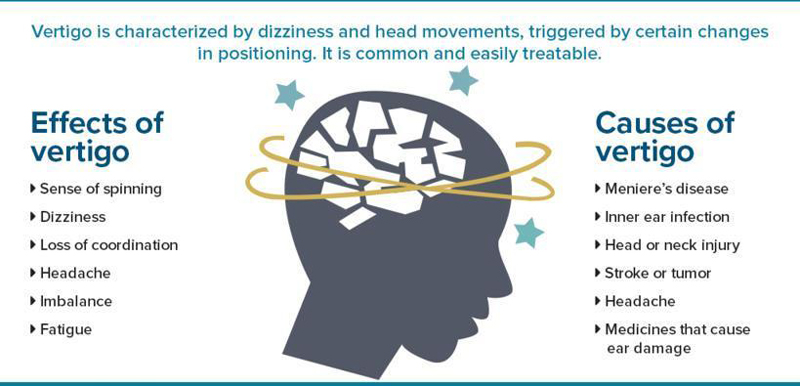Chiropractic Management of Benign Paroxysmal Positional Vertigo Using the Epley Maneuver: A Case Series
SOURCE: J Manipulative Physiol Ther. 2013 (Feb); 36 (2): 119–126 ~ FULL TEXT
Sandy S. Sajko, MSc, Kent Stuber, MSc, DC, Tim N. Welsh, PhD
Maple Grove Chiropractic Clinic,
ON, Canada.
sandysajko@gmail.com
OBJECTIVE: The purpose of this case series is to describe the management of benign paroxysmal positional vertigo in a chiropractic clinical setting.
CLINICAL FEATURES: Eight patients (4 women, 4 men) with symptoms of persistent benign paroxysmal positional vertigo presented for chiropractic care. The outcome measures included self-reported resolution of vertigo, a Short Form 12 Health Survey, Measure Yourself Medical Outcome Profile, and the Dix-Hallpike maneuver. Outcome measures were assessed at initial assessment, 6 days, 30 days, and 3 months postintervention.
INTERVENTION AND OUTCOME: The patients underwent one or more canalith repositioning procedures (Epley maneuver). Scores in each of the categories decreased from the initial to 6-day assessment and then again at the 30-day assessment. The effects of the treatment on the Short Form 12 scores showed changes between the initial assessment and 30 days posttreatment.
There are more articles like this @ our:
CONCLUSION: The patients in this case series demonstrated reduction in symptoms with chiropractic management.
Key Indexing Terms: Vertigo, Chiropractic, Benign Paroxysmal Positional Vertigo, BPPV, Dizziness, Nystagmus, Labyrinth Diseases, Head Movement
Introduction
Benign paroxysmal positional vertigo (BPPV) is characterized by a brief recurrent episode of vertigo and nystagmus brought on by changes in head position with associated symptoms, which may or may not include nausea, balance difficulties, and light-headedness. [1-3] This condition is the most common cause of recurrent vertigo, [3] as between 17% and 42% of patients with vertigo have BPPV. [2] It is more common in women than men. [4, 5] The lifetime prevalence of BPPV is 2.4% overall, 3.2% for women and 1.6% for men, whereas the 1-year prevalence has been reported as 1.6% or 131.6 per 100000 people. [3, 4]
The incidence of BPPV has been reported at a rate of 95.8 per 100000 people annually or 0.6% annually. [3, 4] Benign paroxysmal positional vertigo is more common in older individuals; the peak decades of onset are between the fifth and seventh, with the sixth decade as the most common; the average age of onset has generally been reported to be between 49 and 57 years. [1, 3-6] The 1-year prevalence of BPPV in those older than 60 years is 7 times higher than in the 18- to 39-year age group. [4] To date, several factors have been associated with an increased risk for developing BPPV including being female, advanced age, osteoporosis, endolymphatic hydrops, and head trauma. [7] Benign paroxysmal positional vertigo is considered idiopathic in more than 80% of cases; however, approximately 10% to 17% of cases are posttraumatic. [5, 8]
Read the rest of this Full Text article now!




Leave A Comment